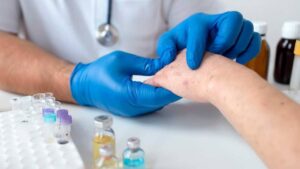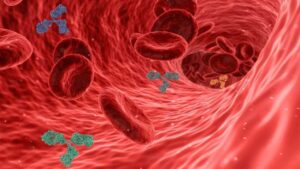Statistics related to HSV-1 herpes in the United States, providing a comprehensive view of the prevalence of this infection in the American population.
Prevalence of HSV-1 Herpes in the United States
According to the Centers for Disease Control and Prevention (CDC), HSV-1 herpes is extremely common in the United States. It is estimated that around 48% of American adults aged 14 to 49 are infected with the HSV-1 virus. This means that almost half of the population in this age group has the virus.
Transmission and Risk Factors
HSV-1 is primarily transmitted through direct contact with active sores or lesions caused by the virus. However, it is important to note that the virus can be transmitted even when there are no visible lesions. Contact with the saliva of an infected person can also lead to virus transmission.
The risk of contracting HSV-1 herpes can be influenced by various factors, including age. Studies show that the prevalence of the infection increases with age. For example, the rate of HSV-1 infection in teenagers is approximately 20%, while in people over 50 years old, the rate can reach 80%.
Relation between Men and Women with HSV-1 Herpes in the United States
Regarding the relation between men and women with HSV-1 herpes in the United States, statistics show that both sexes are equally affected by the infection. The prevalence of HSV-1 does not seem to significantly differ between men and women, indicating that both have an equal risk of contracting the virus.
Although the infection rate is similar, it is important to note that the manifestation of symptoms may vary between men and women. Some studies suggest that women may be more likely to have visible symptoms of HSV-1 herpes than men.
This may be related to hormonal differences, anatomical characteristics, or other individual factors. It is crucial to highlight that HSV-1 infection is not gender-related but rather related to direct contact with the virus. Transmission can occur during activities such as kissing, sharing eating utensils like cups or cutlery, or through intimate contact such as oral sex.
Statistics on HSV-1 Herpes in Specific Populations in the United States
Statistics on HSV-1 herpes in specific populations in the United States can reveal variations in the prevalence of the infection based on factors such as race and age. Let’s explore these differences:
Race/Ethnicity: African Americans: It is estimated that the HSV-1 infection rate among African Americans in the United States is approximately 55% to 70%.
Latinos: The prevalence of HSV-1 among the Latino population in the United States is estimated to be around 50% to 65%.
Caucasians: For the Caucasian population, the HSV-1 infection rate is generally similar to the national average, around 45% to 60%.
Age: Teenagers and young adults: It is estimated that about 20% to 30% of teenagers and young adults in the United States are infected with HSV-1.
Middle-aged and elderly adults: The infection rate increases with age. Studies indicate that approximately 60% to 80% of middle-aged and elderly adults in the United States are infected with HSV-1.
These numbers are only a general estimate and may vary based on different studies and specific demographic data from each region.
It is important to emphasize that statistics on HSV-1 herpes in specific populations are a way to understand the prevalence of the infection in different groups, but should not be used to stigmatize or discriminate against any racial group or age group.
References
Centers for Disease Control and Prevention (CDC) – https://www.cdc.gov/
World Health Organization (WHO) – https://www.who.int/
National Institutes of Health (NIH) – https://www.nih.gov/
American Sexual Health Association – https://www.ashasexualhealth.org/




